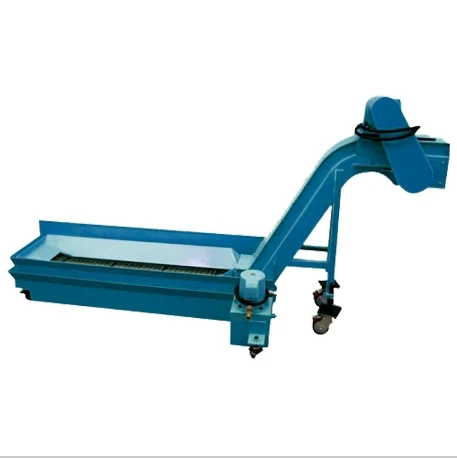Understanding the Functionality and Benefits of Drag Conveyors in Material Handling Systems
The Importance of Drag Conveyors in Material Handling Systems
In the realm of material handling, drag conveyors play an essential role in the efficient movement of bulk materials across various industries. Working primarily in manufacturing, agriculture, and waste management, drag conveyors offer a reliable method to transport a wide range of materials, including grains, powders, and pellets. Their unique design and functionality contribute significantly to the overall performance of conveyor systems, making them a popular choice among engineers and manufacturers.
Understanding Drag Conveyors
Drag conveyors, also known as drag chain conveyors, utilize a chain system to pull material through an enclosed trough. The materials are moved via flights attached to the chain, which drags the load along the conveyor's bottom. This design is particularly advantageous for handling materials that might crumble or break apart if subjected to the high speeds and abrasive conditions often associated with other conveyor types such as belt conveyors.
One of the key features of drag conveyors is their horizontal or inclined configurations, allowing for versatility in installation based on the specific needs of a facility. They can operate at varying angles, facilitating the efficient loading and unloading of materials in constrained spaces or complex layouts.
Advantages of Drag Conveyors
1. Efficient Material Handling Drag conveyors are designed for continuous material flow, significantly reducing downtime during operations. They enable the handling of heavy and bulky materials with minimum energy consumption, resulting in lower operational costs.
2. Durability and Reliability Constructed from robust materials, drag conveyors are built to withstand harsh operating conditions. Their enclosed design minimizes wear and tear from external elements, such as dust and moisture, ensuring a longer lifespan and consistent performance.
drag conveyor

3. Versatility Drag conveyors can transport a variety of materials, including coarse aggregates, sand, grain, and even recycling materials. This versatility makes them ideal for use in multiple industries, from agriculture to heavy manufacturing.
4. Low Maintenance With fewer moving parts compared to other types of conveyors, drag conveyors require less maintenance. Their simple design and operation reduce the need for frequent inspections and part replacements, thus saving both time and money for businesses.
Applications in Various Industries
In agriculture, drag conveyors are crucial for transporting grain from silos to processing facilities. Their ability to handle materials gently minimizes damage, maintaining the quality of the grain during transit. In manufacturing, these conveyors are indispensable for moving raw materials to production lines, ensuring a smooth workflow for various processes.
Waste management facilities also benefit from drag conveyors, which are used to transport sorted recyclables or bulk waste materials efficiently. Their robust design allows them to handle the heavy loads typically associated with waste transfer, contributing to more effective recycling efforts.
Conclusion
As industries continue to evolve and the demand for efficient material handling solutions grows, drag conveyors remain a critical component of conveyor systems across various sectors. Their unique design, durability, and versatility ensure that they can meet the diverse needs of modern businesses. By investing in drag conveyors, companies can enhance their material handling processes, reduce operational costs, and ultimately improve productivity. Given their numerous advantages, it’s clear that drag conveyors will continue to play an integral role in the future of material handling. Whether in agriculture, manufacturing, or waste management, understanding and implementing drag conveyor systems is essential for any business aiming to optimize its material handling capabilities.








